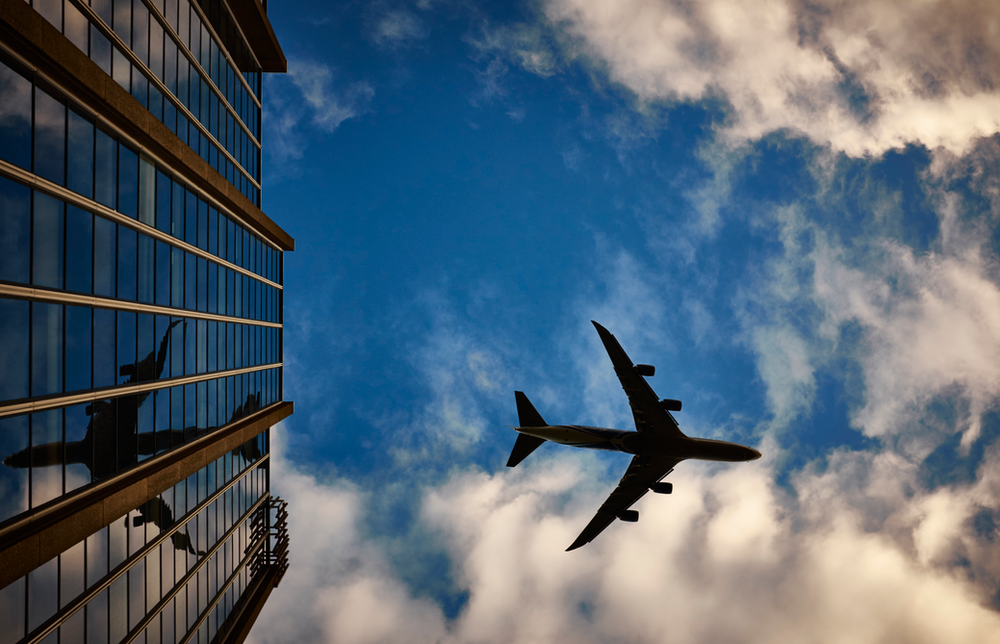
Ideally, we're all working together to create a world with seamless transitions for children's development, when they can move smoothly from school to home to neighborhood without the jarring transitions of rules and noise and agendas. Ideally, our children are welcome in all the same places we are, and we are supported by our communities for the ways in which our lives operate differently when we are in the company of our children.
In the meantime…
There are airports.
Loud, busy, cacophonous, stressful places that bustle and smell different and have all sorts of different rules and not enough places to sit and new bathrooms and heavy tasting foods and lots of sugar and lines and angry people.
If we created a list of places least likely to support peaceful, collaborative, cooperative behavior in young children, fast-food ballpits and international airports would vie for the dishonor.
Air travel with children isn't typically easy, but there are some things you can do to make it go a little more smoothly.
1. Prepare before you leave for the airport. Whenever you can, take an early flight- the earlier flights are less likely to be delayed and the airport is often less crowded. Prepare your child, too, satisfying basic needs first. Make sure they are well-fed on healthy food, hydrated and well-rested. For you and your child, opt for layers of clothes that are easy to take on and off, and slip-on shoes that can get through security easily.
2. Pack a carryon bag that's manageable for your child to master. Fill it with security-friendly portions of healthy snacks, especially fresh fruits, vegetables and protein. Include activity books, books to read aloud together, and a small container of crayons. Let your child take responsibility for their bag, even if it means moving a little more slowly through the airport. Avoid overpacking your own carryon, and take with you on the plane only what you think you'll use while you're flying. Be sure to add a couple trash bags to one of the outer pockets: you'll appreciate having a place to put any trash when your hands are full later on.
3. Avoid bringing special, one-of-a-kind plush friends or toys with you when you travel and, instead, let your child know that their favorite cozy will be waiting for them back at home. Instead, consider a comfort item that's special for travel- if your child has a special cozy that only comes with them when they're traveling, the novelty may help to compensate for leaving a preferred toy behind.
4. Carry small, simple, inexpensive manipulatives. A bag of pipe cleaners can be used to form letters, shapes and structures in very small space, and it's much less likely to get lost between the cushions or under seats. Don't presume that your child will zone out for a plane ride with a video on-screen. Instead, draw their attention to the things they can see and talk about with you during the trip.
5. Establish safety rules for navigating the airport. For example, "airport walking" might indicate that a child should stay in front of or beside their parent, but not fall behind. If your child is younger, keeping your child in sight will make the stressful navigation of the airport easier on you all. Consider an ID band with your cell phone number should you and your child be separated.
6. Make friends: The flight attendants and other airport personnel are on the receiving end of a lot of travelers' stress each day… be kind to them. Teach your children to make eye contact and say, "Good morning," to the flight attendants as you approach the gate and board the plane. Model grace and courtesy as you interact with airport personnel as well, remembering all of your, "Pleases," and "Thank Yous," as your child learns from you whether the airport is a place you can navigate with a friendly demeanor.
7. Take your time & keep your cool: Remember that you are going through a space that is not designed for children and which causes most adults stress. It's likely to do the same for your child. Go slowly, even if it means arriving at the airport much earlier than you might have if you were traveling alone. Expect that your child may be more anxious, more demanding or less predictable in these settings, and offer them (and yourself) some grace to get through it. Remember to lower your voice and shorten the distance should you need to redirect your child. Think through all the tasks you may encounter at the airport and prepare for them as much as possible. And once you're there, stay calm and smile. This is an adventure you're sharing with your child, from the moment you take your bag out of the closet to when you arrive at your destination. Balance the stress of travel by thinking of it as another opportunity to share the world with your children, and to create memories that will last far longer than the lines at security.
#Travel #ForParents #General
